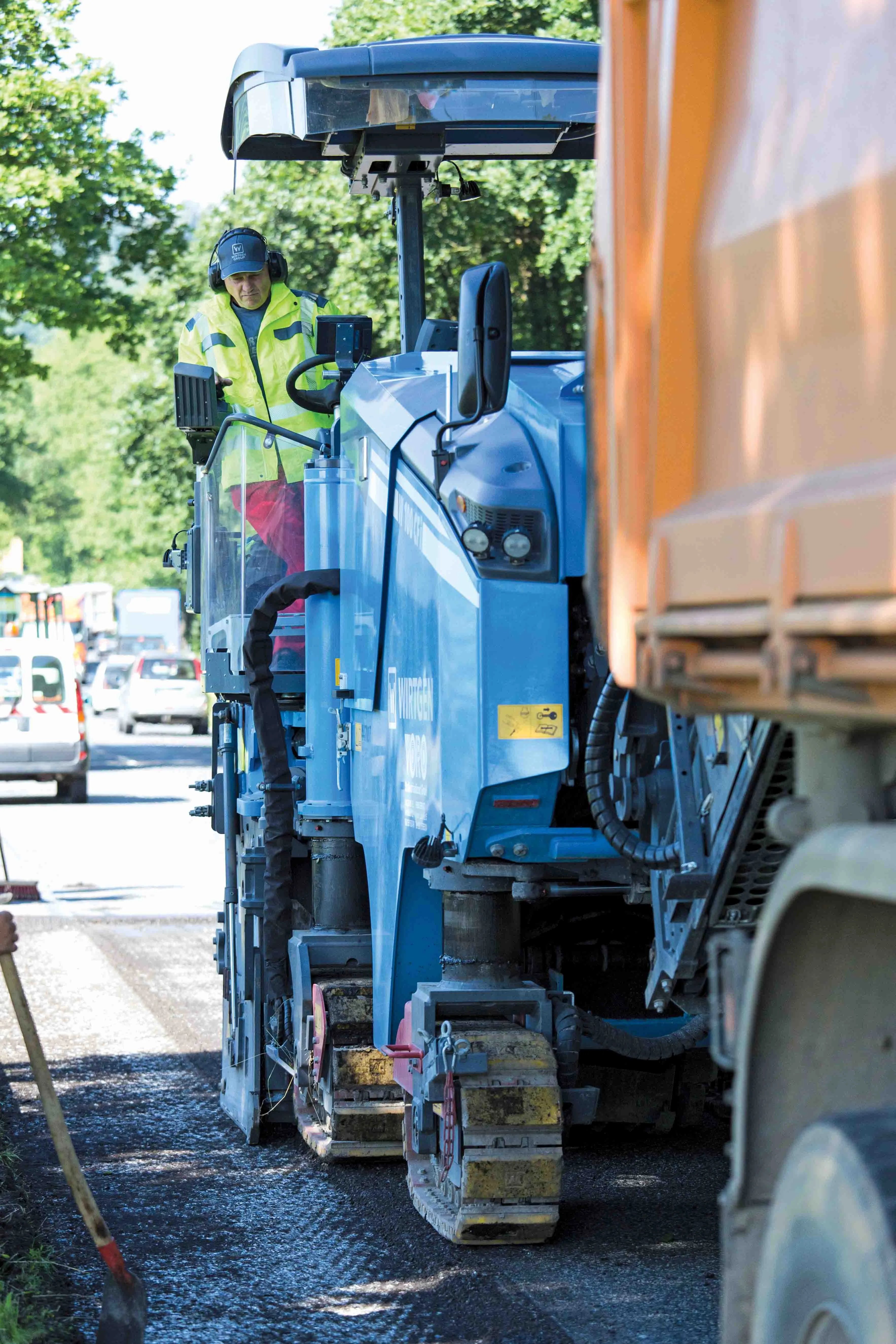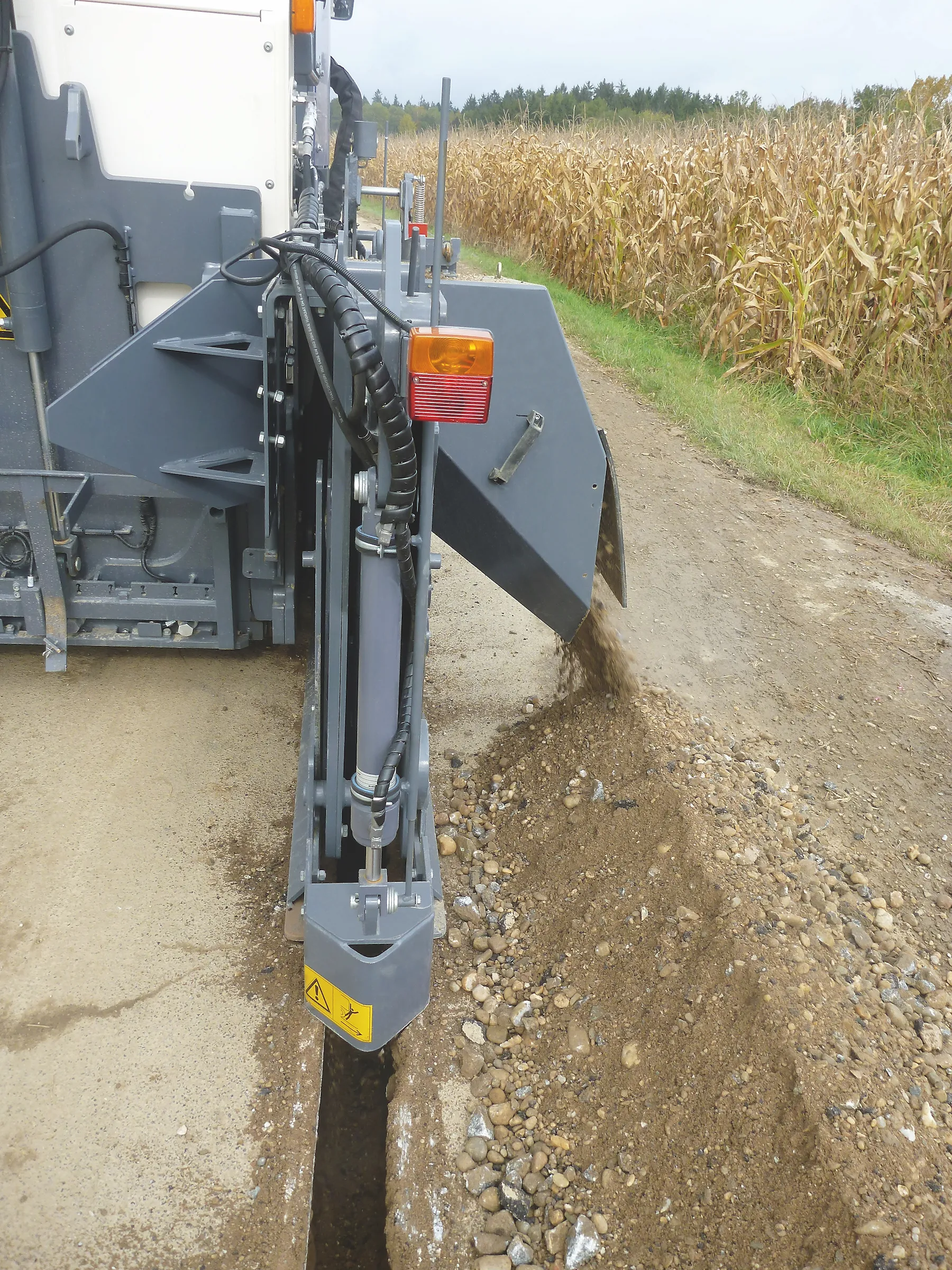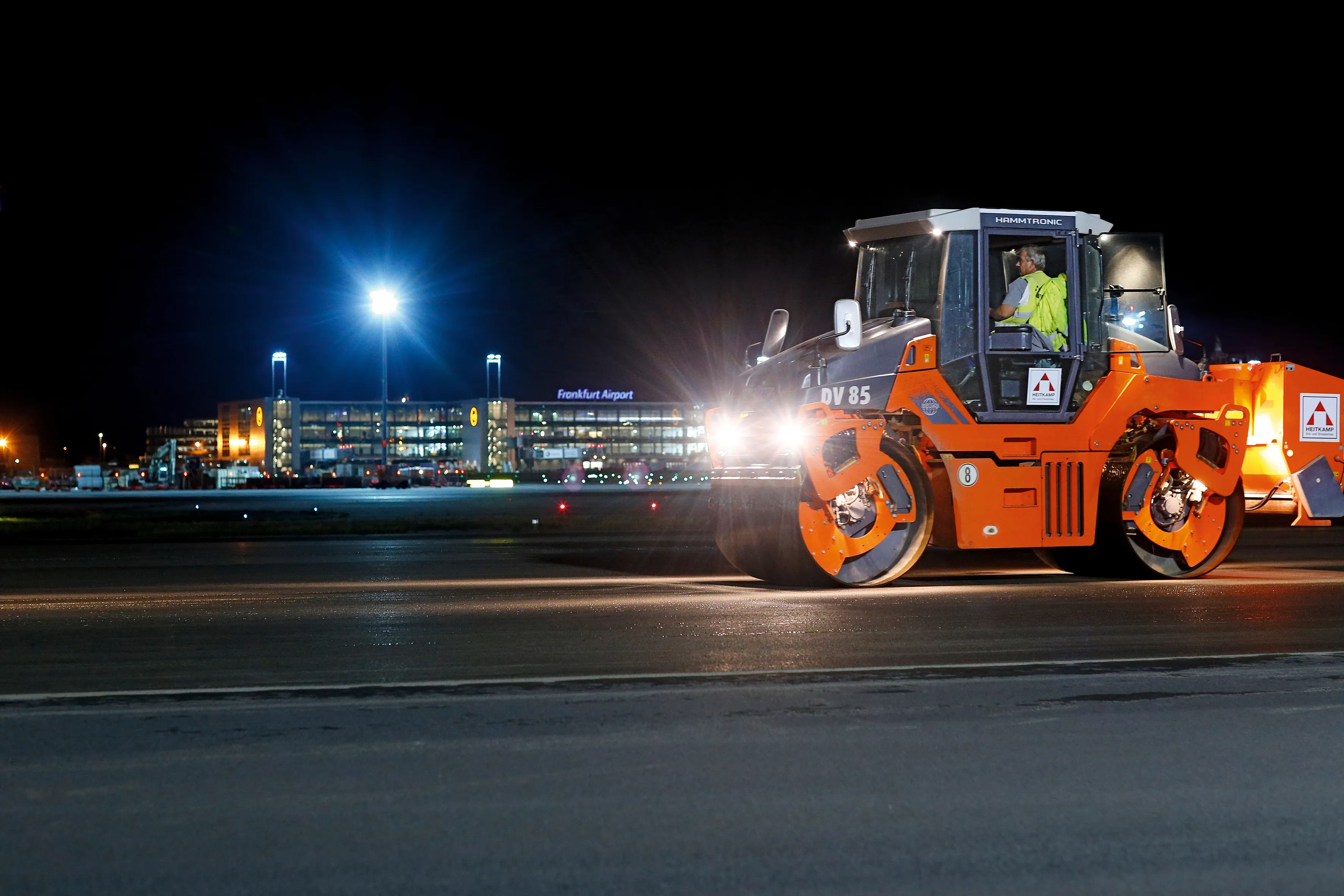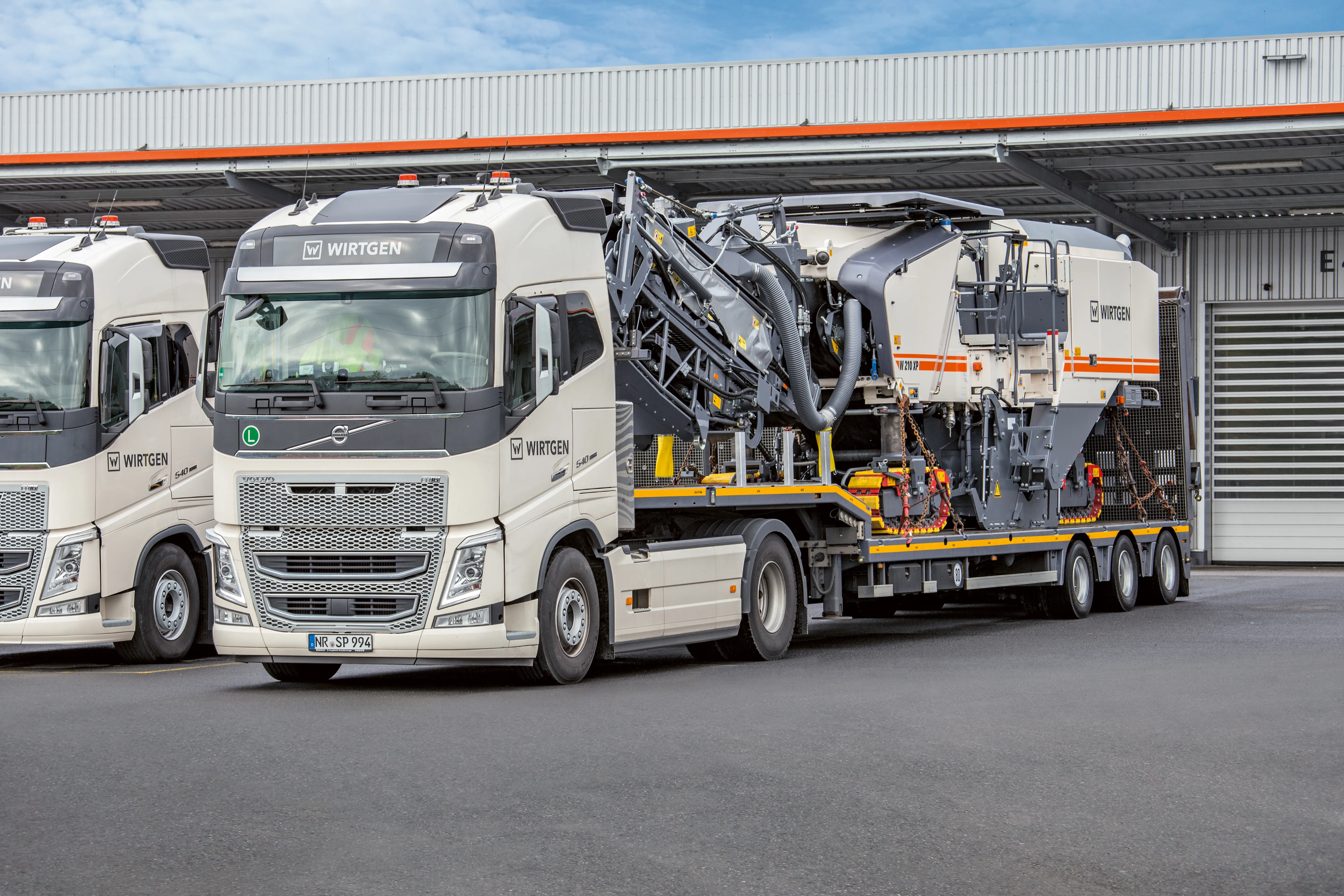Milling efficiently with a versatile, mid-sized machine has offered benefits on a German road job. A German contractor has found that using a mid-sized milling machine from Wirtgen has offered a good combination of both versatility and productivity for a road rebuild job. Kassel-based milling specialist VORO has used a Wirtgen W 100 CFi to upgrade the surface of a section of the busy B3 route. The B3 is an important route and runs 755km from Buxtehude in the north of Germany through to the Swiss border in t
March 22, 2017
Read time: 4 mins

Milling efficiently with a versatile, mid-sized machine has offered benefits on a German road job
A German contractor has found that using a mid-sized milling machine from2395 Wirtgen has offered a good combination of both versatility and productivity for a road rebuild job. Kassel-based milling specialist VORO has used a Wirtgen W 100 CFi to upgrade the surface of a section of the busy B3 route.
The B3 is an important route and runs 755km from Buxtehude in the north of Germany through to the Swiss border in the south. The job required milling sections of damaged asphalt on one side of the highway close to Jesberg in the state of Hesse. As the project progressed, a free flow of traffic had to be maintained on the opposite lane. A total of 1,200m2 asphalt surface course had to be removed to a depth of 40mm. The milled area was divided into 13 individual sections, each 3.5m wide and located at intervals of 50-100m.
The firm opted to use this machine as it offers manoeuvrability and versatility, as well as being easy to transport and having sufficient productivity to carry out the work in a suitable timeframe. For the job the machine was fitted with Wirtgen's own Generation X point-attack cutting tools, which also performed well and left a good finish according to the contractor.
Meanwhile the machine’s relatively high travel speed allowed it to be moved quickly from one part of the jobsite to another, reducing overall downtime across the 1.2km section of road.
The large number of working functions also helped with the work. For example, the automatic button-activated folding in of the machine's right rear crawler track helped to speed up the milling work on the B3. The new outside position enables the right rear crawler track to be located within the cutting diameter of the drum so that the machine could cut alongside a safety barrier. But to prevent the side plate from sinking into the surface when working on loose substrate it has an active floating position.
The milling machine operator was also able to use an automatic lowering function when positioning the W 100 CFi in the cut. This ensures that the milling drum slowly penetrates the material down to the set depth. As traffic continued to flow on the opposite side of the highway during the rehabilitation project and the job called for frequent machine relocations, the compact milling machine was well-suited to the job in hand.
Meanwhile the good all-round visibility offered an additional benefit, allowing the operator to manoeuvre the machine with accuracy. As the chassis of the W 100 CFi is narrower than earlier generation units, this provides the operator with a better view to the front. In addition, the operator's stand can be hydraulically displaced 200mm beyond the edge, giving a better view ahead of the milling drum assembly and onto the front right-hand crawler track. In addition, the onboard camera system means that the left-hand milled edge or material discharge is clearly visible to the machine operator on the high-resolution display. A dust extraction device on the discharge conveyor also meant that the worksite was cleaner and safer for the road crew.
The milling work was completed within a few hours, delivering a smooth surface to meet the client’s requirements, while the cutting tools are said to have performed well with minimal wear. Because the milled surface was smooth, this allowed efficient paving of the new surface course immediately after the milling work had been completed. This job was carried out by a1194 Vögele road paver.
A German contractor has found that using a mid-sized milling machine from
The B3 is an important route and runs 755km from Buxtehude in the north of Germany through to the Swiss border in the south. The job required milling sections of damaged asphalt on one side of the highway close to Jesberg in the state of Hesse. As the project progressed, a free flow of traffic had to be maintained on the opposite lane. A total of 1,200m2 asphalt surface course had to be removed to a depth of 40mm. The milled area was divided into 13 individual sections, each 3.5m wide and located at intervals of 50-100m.
The firm opted to use this machine as it offers manoeuvrability and versatility, as well as being easy to transport and having sufficient productivity to carry out the work in a suitable timeframe. For the job the machine was fitted with Wirtgen's own Generation X point-attack cutting tools, which also performed well and left a good finish according to the contractor.
Meanwhile the machine’s relatively high travel speed allowed it to be moved quickly from one part of the jobsite to another, reducing overall downtime across the 1.2km section of road.
The large number of working functions also helped with the work. For example, the automatic button-activated folding in of the machine's right rear crawler track helped to speed up the milling work on the B3. The new outside position enables the right rear crawler track to be located within the cutting diameter of the drum so that the machine could cut alongside a safety barrier. But to prevent the side plate from sinking into the surface when working on loose substrate it has an active floating position.
The milling machine operator was also able to use an automatic lowering function when positioning the W 100 CFi in the cut. This ensures that the milling drum slowly penetrates the material down to the set depth. As traffic continued to flow on the opposite side of the highway during the rehabilitation project and the job called for frequent machine relocations, the compact milling machine was well-suited to the job in hand.
Meanwhile the good all-round visibility offered an additional benefit, allowing the operator to manoeuvre the machine with accuracy. As the chassis of the W 100 CFi is narrower than earlier generation units, this provides the operator with a better view to the front. In addition, the operator's stand can be hydraulically displaced 200mm beyond the edge, giving a better view ahead of the milling drum assembly and onto the front right-hand crawler track. In addition, the onboard camera system means that the left-hand milled edge or material discharge is clearly visible to the machine operator on the high-resolution display. A dust extraction device on the discharge conveyor also meant that the worksite was cleaner and safer for the road crew.
The milling work was completed within a few hours, delivering a smooth surface to meet the client’s requirements, while the cutting tools are said to have performed well with minimal wear. Because the milled surface was smooth, this allowed efficient paving of the new surface course immediately after the milling work had been completed. This job was carried out by a








